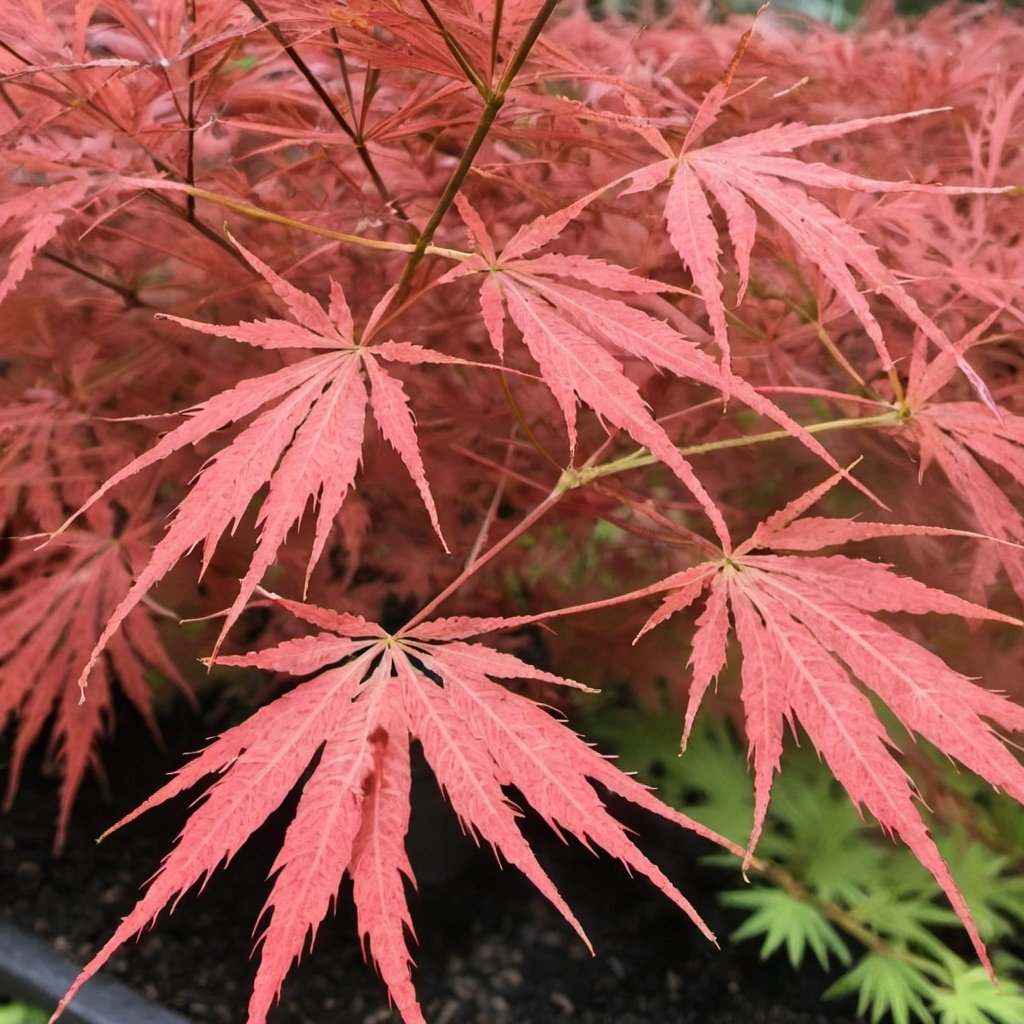Lace Leaf Japanese Maple Tree Seeds
Lace Leaf Japanese Maple Tree Seeds
Couldn't load pickup availability
Lace Leaf Japanese Maple Tree Seeds
(Acer palmatum dissectum d.w.)
Acer palmatum dissectum, commonly known as the Lace Leaf Japanese Maple or the Cut Leaf Green Leaf Japanese Maple, is a popular ornamental tree known for its delicate, lacy leaves and vibrant fall colors.
Appearance: This tree has deeply lobed, finely dissected leaves that give it a lacy, delicate appearance. The leaves are usually green or red in the spring and summer, turning vibrant shades of red, orange, and yellow in the fall.
Size: Acer palmatum dissectum is typically a small to medium-sized tree, reaching heights of 6 to 10 feet with a similar spread. It has a slow growth rate and a weeping, cascading habit.
Hardiness: It is hardy in USDA zones 5 to 8, meaning it can withstand winter temperatures down to about -20 degrees Fahrenheit.
Light Requirements: This tree prefers partial shade to full sun. In hotter climates, some shade during the hottest part of the day can prevent leaf scorch.
Soil Requirements: Acer palmatum dissectum prefers well-drained, slightly acidic soil. It can tolerate a variety of soil types but performs best in soil rich in organic matter.
Watering: Regular watering is essential, especially during dry periods. However, it is important to avoid waterlogged soil, as this can lead to root rot.
Pruning: Minimal pruning is needed, but it can be done to maintain shape and remove any dead or damaged branches. Pruning is best done in late winter to early spring before new growth begins.
Uses: This tree is often used as a focal point in gardens and landscapes due to its striking appearance. It is also popular in bonsai and container gardening.
Zones: 5 to 8
Stratification Requirement: Seed requires a hot water treatment followed by 90-120 days cold moist stratification.
Planting Instructions:
Preparing Seeds
- Soaking: Soak the seeds in warm water for 24 hours to soften the seed coat.
Stratification (Cold Treatment)
- Cold Moist Stratification: Place the soaked seeds in a plastic bag with moist sand or seed-starting mix.
- Refrigeration: Keep the bag in the refrigerator at about 1-5°C (34-41°F) for 90-120 days. This mimics winter conditions necessary for breaking seed dormancy.
Sowing Seeds
- Timing: After stratification, sow the seeds in early spring.
- Soil: Use well-draining potting soil, preferably a mix suitable for seed starting.
- Depth: Plant the seeds about 1/4 inch deep.
- Watering: Keep the soil consistently moist but not waterlogged.
Germination and Care
- Light: Place the pots in a location with bright, indirect sunlight.
- Temperature: Maintain a temperature of about 15-20°C (59-68°F).
- Watering: Keep the soil moist.
- Transplanting: Once the seedlings have developed a few sets of true leaves, they can be transplanted to individual pots or into the garden.


